Our home away from home for 600 miles of bikepacking and over sixty nights of camping.
When Kelley and I decided to go to Iceland earlier this year, I knew our shelter would make or break the trip. Icelandic weather is notoriously difficult; the country averages a 70% chance of daily precipitation, and temperatures in the middle of summer can dip below freezing. With no trees, you’re often completely exposed to the elements, including a fierce oceanic wind with no windbreaks to slow it down before it barrels into you.
I chose carefully. I researched almost every tent manufacturer on the market, and asked manufacturers directly about design, durability, warranty, and weight. The Exped Orion II was chosen from a big list, and I asked them if they were willing to let us test the Orion II in Iceland over a 30-day trip. They were the only company I asked, and they were delighted to put their product through the crucible of Iceland’s constant foul weather.
We had bad days with rain and wind, but I’m happy to report that this 4-season tent was up to the challenge of one of the planet’s most punishing climates. Here’s our six month review of the Exped Orion II.
The Orion II is a pretty solid tent offering from Exped, which recently expanded its offerings to the US. Exped’s history is in the alpine environments of Europe’s most famous peaks, and there are lots of features on this tent that are decidedly European — they’re uncommon on tents designed in the US. The Exped Orion II’s original pole configuration dates back to 1997, so it’s been trusted by backpackers for almost two decades.
The Orion II is an exoskeleton tent, which means it uses pole sleeves sewn into the fly. I was initially pretty skeptical about sleeves, as I had violent flashbacks to cheap fiberglass tents where the poles would disconnect inside the sleeve.
This initial fear was unfounded, but it highlighted a theme of our use of the Orion II – read the instructions! Exped’s videos taught me how to get the poles in and out of the sleeves in 30 seconds without issue. It wasn’t the only part of the tent that wasn’t immediately obvious. This tent has much more hiding beneath the surface, and I’ll try to highlight some of the obscurities and little innovations.
Kelley and I used the Orion II in Maine, New Hampshire, Massachusetts, and Iceland over the last six months. All told, we have close to 60 nights spent in the tent.
Our use included:
- Backpacking around Acadia National Park
- Camping in the White Mountains
- Two brief bike tours in Massachusetts
- 10+ nights on the coast of Massachusetts, including several thunderstorms
- 30 nights in Iceland on a 600-mile bikepacking trip
The Iceland trip was definitely the most demanding use of our tent, including the worst weather conditions we faced over the 6-month period.
Comfort and Livability
The Exped Orion II is a roomy tent. We had a perfect opportunity to compare it when we were at the Reykjavik Campground; with over 300 tents in a single field, it was pretty clear that the Orion II was one of the tallest, if not the tallest, 2-person tent there.
It’s also plenty wide. You could squeeze in three adults in an emergency. For two adults, we had room to sprawl. We met a couple who opted for a 3-season tent for their world tour, and I think our 2-person felt a little roomier with the huge vestibule spaces and steep walls. I’m 6 feet tall and had no problems with my feet or head touching the walls, but if you’re 6’5″, you might touch.
I rigged up two paracord clotheslines inside the vestibule of our tent. This let us dry clothes while it was raining. It wasn’t a perfect system, but things went from soaking wet to slightly damp overnight. Since the tent walls hang perfectly straight under the massive dome of the tent, the clothes didn’t drip on us while we were sleeping. Even with wet clothes hanging on both sides and 100% humidity, we had no condensation inside the tent for the entire trip.
In total, we had four panniers, four large drybags, and a lot of little extras and all of that fit under a single vestibule. We had no storage problems, and our stuff was always dry. We cooked under the vestibules every other night, with the doors open.
The livability of the tent was especially important when the weather went south. During our trip, we had a couple of 24-hour periods with nothing but pouring rain. On the worst stretch, we stayed in our tent for a full day, reading books and chatting and napping. The huge vestibule and that little overhang let us open the doors, letting in light and fresh air.
A yellow interior makes a big psychological difference over a month. Even after thirty straight days, we loved our tent and could have spent more time in it. In fact, our first night back in the U.S. was spent in the tent, since we were staying with family near Logan Airport. I guess we tested it for 31 days straight!
Design
The Exped Orion II really impressed me with attention to detail. From the zipper pulls to the pole system, every inch of the tent is thoroughly vetted.
It’s not the most intuitive tent I’ve ever used, because the exoskeleton setup is a little more complex than your average double-wall tent. But, the more we used it, the more useful we found certain features – once you’ve watched all the instructional videos and read through the (brief) manual, you start to understand some of the design choices a little better.
After practicing set-up/take-down a handful of times, I was able to set up the tent in less than two minutes in the dark, with no light. The poles of the tent integrate directly with the fly, and the inner part stays attached the entire time. So, even in the pouring rain, we could throw the tent down and slide the poles in without exposing the inside to any weather. This came in handy almost every night in Iceland.
You can still set up the inner and outer on their own, using the poles. It’s a pretty flexible system, but it’s not as simple as your “average” American tent, where you simply unclip the fly when the weather is nice. You have to deliberately set up the inner with the poles if you want to see the stars.
I reached out to Exped and talked to them about this design choice. Kaj Bune, the director of Brand Development, had this to say:
“[The Exoskeleton design] is the predominant design in Europe, but not in North America. As you now know, attaching the guylines directly to the pole sleeves (and therefore the poles) increases the strength in rough conditions. Poles in the fly also tighten the structure even when guylines are not employed.”
There were a lot of nights in Iceland where the tent was buckling under gale-force wind when we first set it up, and we needed all six guylines staked out taut to keep the walls in place. The tent doesn’t budge once you’ve guyed out the poles. There are attachment points for a few more guylines, and unlike most tent companies, Exped includes all of the extra guylines with the tent, along with these little doohickeys:
This yellow mesh bag is basically a sandwich baggie attached to the guylines. When you pack up the tent, you can wrap the line around your hand into a little coil, and then fold the coil right into the mesh bag. Fold it over itself, and the line stays out of the way. It’s a really intelligent feature, and the bags act as guyline flags when not in use so nobody trips on your tent.
Everything about the design of the tent was intuitive like that. The vent props use a strut to keep them away from the tent wall, and that strut can be used as an emergency pole splint. Even the pole feet (pictured above) can be used as splints if you really screw up.
A drawback: This tent loves flat ground, and this was a problem for us in a couple of areas. Because the main ridge pole reaches the ground on either side, you need the ground you’re on to be level for at least eight feet across. If the ground is concave or you’re on a slope, it’s nearly impossible to set the tent up correctly. We had issues in one campground filled with rolling hummocks; it was a real brain-teaser figuring out how to orient the tent with the windward side in the right direction, while also leveling that ridge pole. It was only an issue one night out of thirty.
The doors and zippers are all well-designed. It’s easy enough to fiddle with them in the dark on a bathroom run. The loft on the inside was nice, but it has a single attachment in the center which wasn’t so useful. It made it easier for things to roll out of the loft. Also, we had to attach the loft on the smallest setting at each of the attachments to keep it from hanging into our faces when we sat. It worked fine like this, but it seemed like a waste to use the smallest of seven length options. Once set like this, we never once changed it.
The tent comes with a strange stuff sack that seemed interesting in the video, but in practice, it was finicky. I ultimately used a regular dry-sack to store the tent. Similarly, Exped also includes a 3-section stake/pole bag with labels for each component, but I just grabbed an extra set of stuff sacks I had laying around and used those because they were a few ounces lighter. Someone might think these extras are cool, but not me- I kept it light and simple. At least they’re included.
Exped also includes all the necessary stakes. It’s shocking how many tents don’t come with more than eight, so this was a nice touch.
Other than these very minor issues, this tent totally gets out of your way. The features are not superfluous and the tent functions best when conditions are at their absolute worst. When we rolled into camp in the pouring rain, with a howling wind, we could set this up and get inside for a good night’s sleep. That’s as good a design testament as I can give.
The poles fold down considerably, and the tent packs small. I kept it in a roll on my handlebars, and I kept the poles and stakes in my framebag. It’s not a light tent at 6.5lbs, but there’s no superfluous weight. This is about as light as you can go for a 4-season double-wall.
Durability
There’s nothing exciting to report here. That’s a good thing!
Tent manufacturers, including Exped, recommend not leaving your tent in direct sunlight since UV degradation can break down the waterproof coatings. Well, Iceland has sunlight for almost 24 hours a day, and with less than 4% tree cover, there’s no shade. We had our tent in direct sunlight for 12+ hours a day for 30 days straight because we didn’t have a choice. I winced every time I set it up.
But, after six months of use and the crucible of UV radiation, the tent looks exactly the same as the first time I set it up. No fading, no peeling, no cracking, no spots, no water infiltration — it’s fine. Maybe a few summers of this would take a toll; I intend to find out just how much abuse that fly can take, but it’s not showing its age yet.
One thing to note: Exped makes two outer fly fabrics. The one I have is the PU-coated fabric, and that’s the one that Exped actually recommended to me. They also make a siliconized nylon fabric option called the Exped Orion II Extreme, since a lot of UK backpackers swear by it for increased tear resistance, but Exped warned that it was prone to sagging and took much longer to dry. The difference in tear-resistance is supposed to be almost negligible.
For our rainy conditions, PU-coated was the right choice.
The poles aren’t bent from use, the stakes all held up (typical DAC stuff, the same as most manufacturers like Big Agnes use), and none of the zippers failed. Even the mesh has resisted the occasional sharp poke from pannier mounting hardware or stray sporks.
On some nights, the wind was enough to prop us up if we leaned into it. Because the exoskeleton design puts the guylines right on the poles, the seams of the tent weren’t stressed that much, even in super big gusts. We didn’t have anything loosen up or fail overnight, ever. None of the guyline attachments pulled loose, and none of the lines snapped. I tripped on them about 100 times.
I’m interested in using this tent in some big snowfall this winter, and will follow up when I get the chance to. I’ll be out all winter.
Final Thoughts
The Exped Orion II is a great 4-season tent.
We needed a real home to make our first international bike tour a pleasant experience, and the sunny yellow interior of the Orion II exceeded our expectation of comfort. We had plenty of opportunities to rent rooms or stay in hotels, but we didn’t; we preferred our tent.
We also met and spoke with a ton of other bike tourists who rented cars halfway through their trip. It was a huge proportion. People just got uncomfortable with Iceland’s constant wind and rain. I credit the Orion II for helping us stick it out for the entire trip. This tent would pay for itself quickly if you skipped accommodations and used campgrounds in just about any European country.
It’s not the perfect tent for every trip. At six and a half pounds, it’s hefty. Split between Kelley and I, it’s not too much more than our 1-person shelters, and the durability and security of that extra ridgepole makes the weight penalty easier to swallow, but when we do short bikepacking trips on the weekends, we opt for lighter shelters.
This will be our go-to for international touring, bad-weather camping, winter fatbike trips, and any car camping trip we do over the next few years. I’m still using it, so keep an eye out for a post-winter follow-up.
And if you’re in the market for a 4-season, the Orion II is my firm recommendation.
Read all about our Iceland adventure by starting here!
Full Disclosure: I’m an equipment tester for Exped, but my review was not contingent on a positive rating. Testing gear helps us get what we need for our trip to Iceland. We want to thank Kaj Bune at Exped for helping Max, The Cyclist go abroad this year.

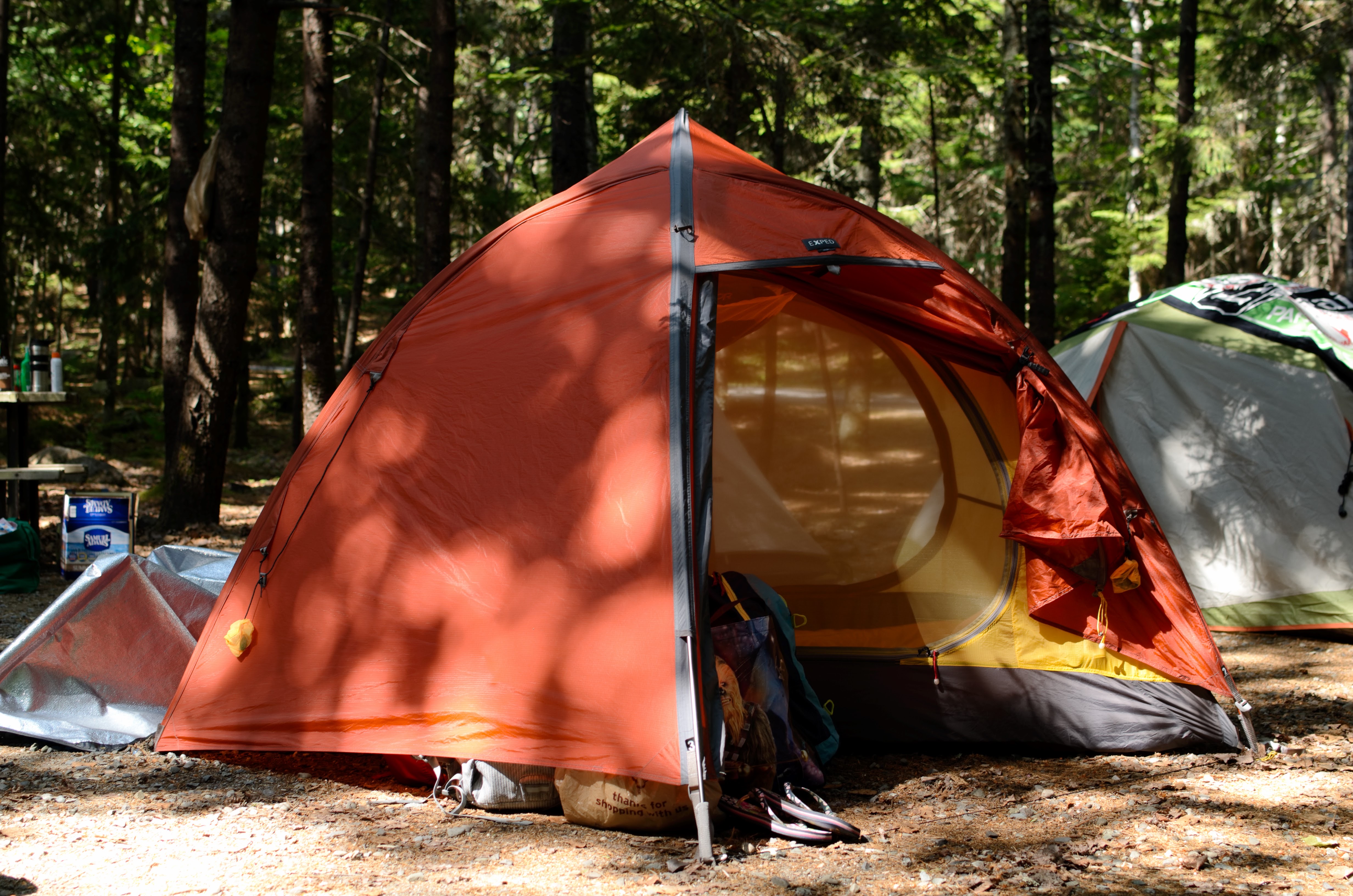
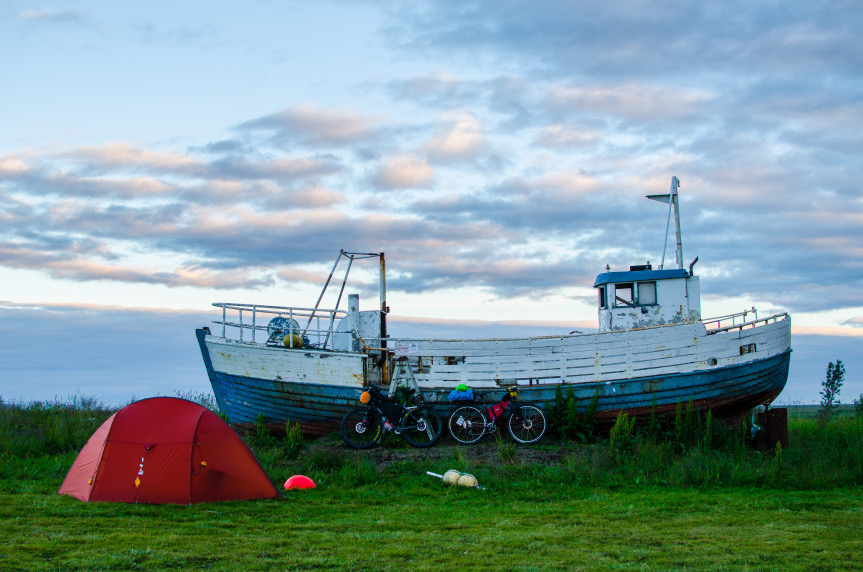

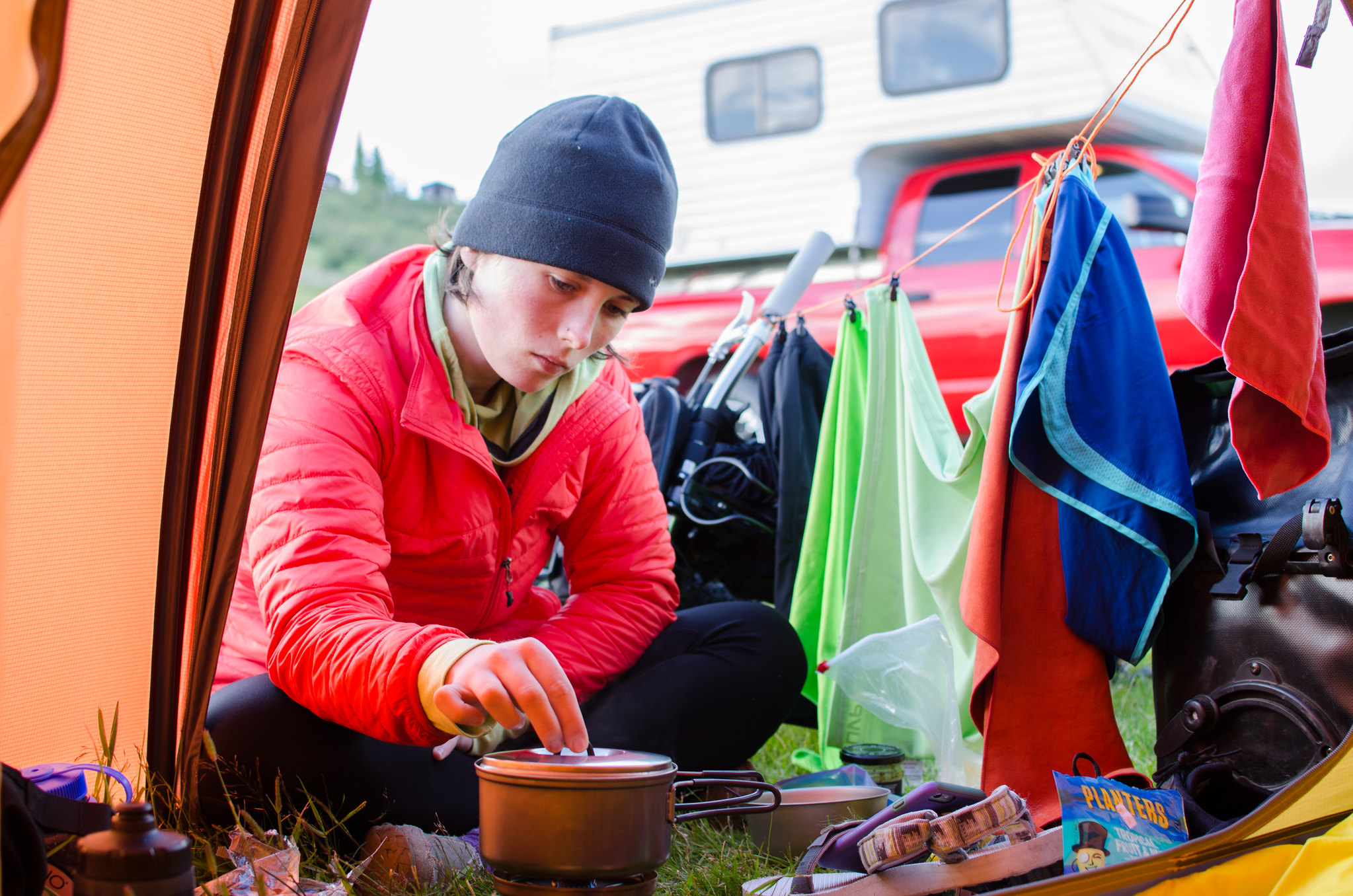
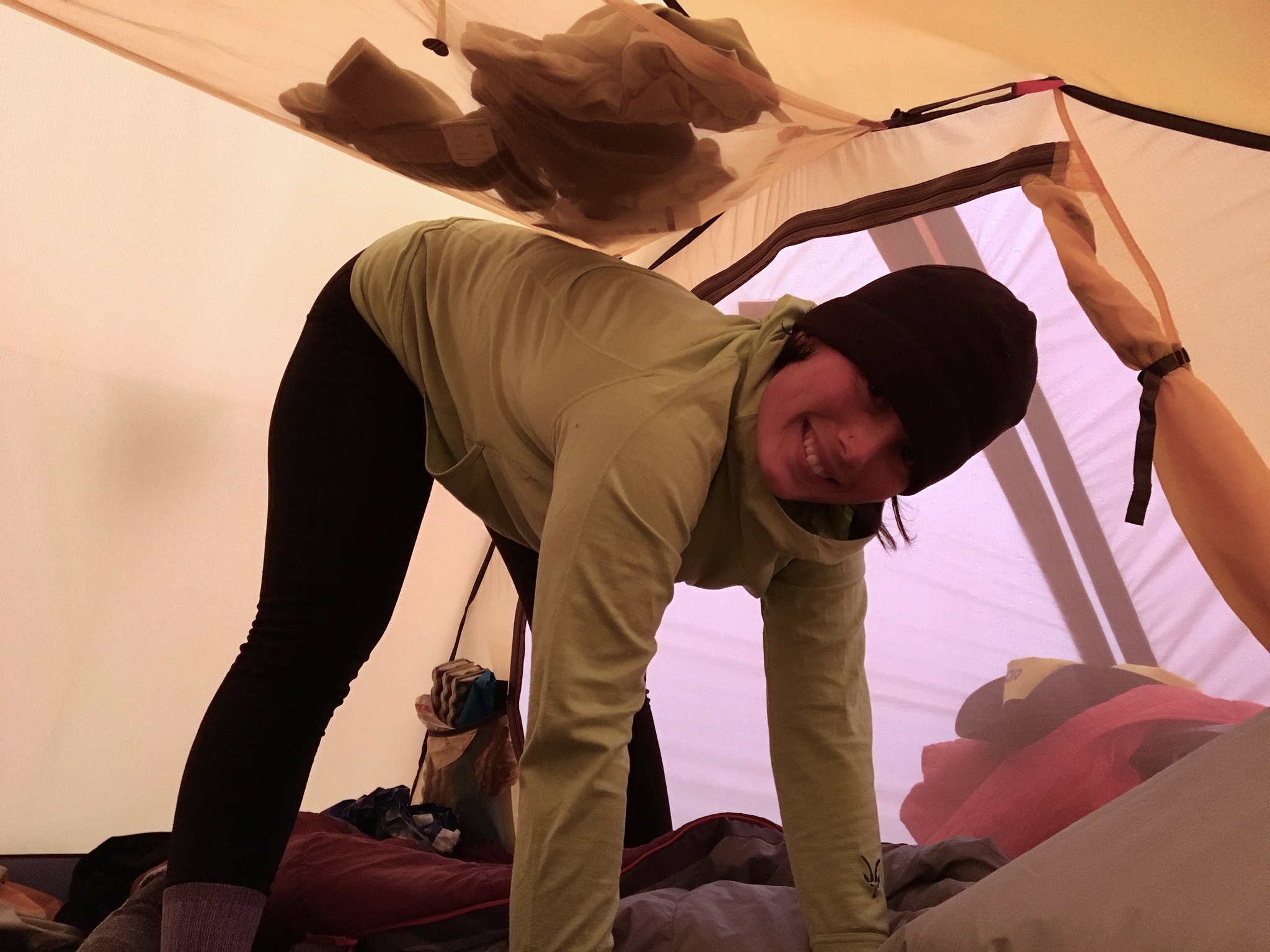
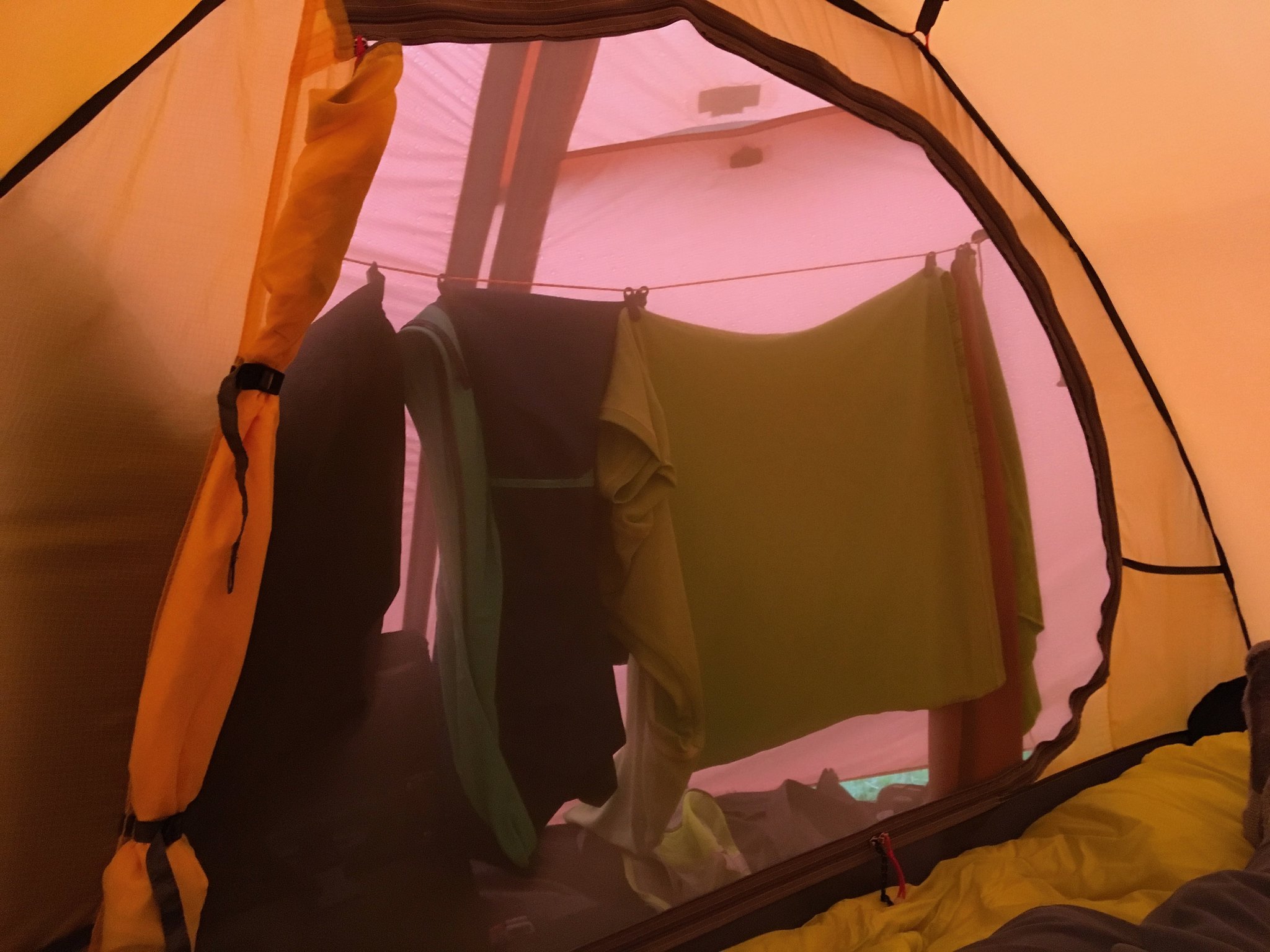
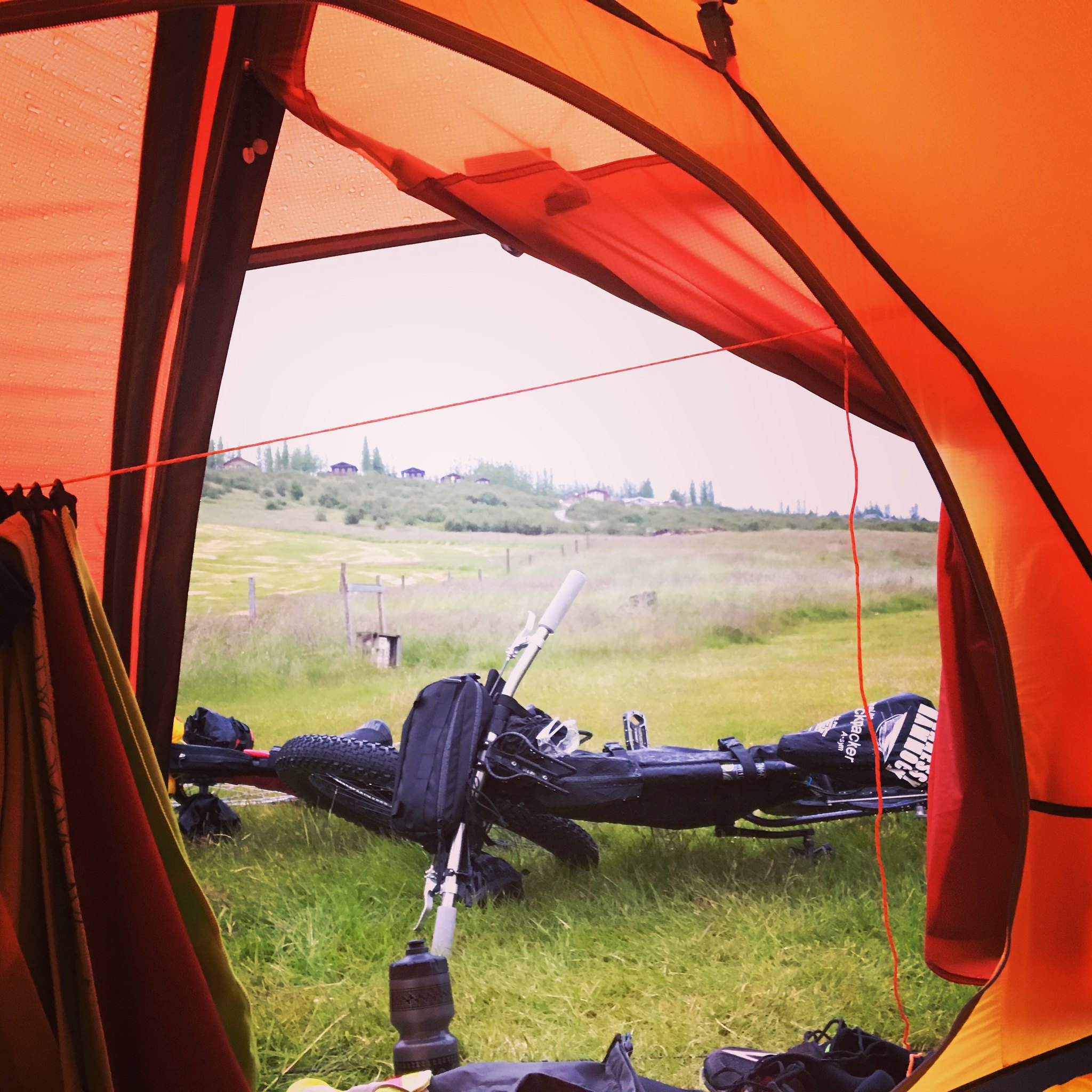

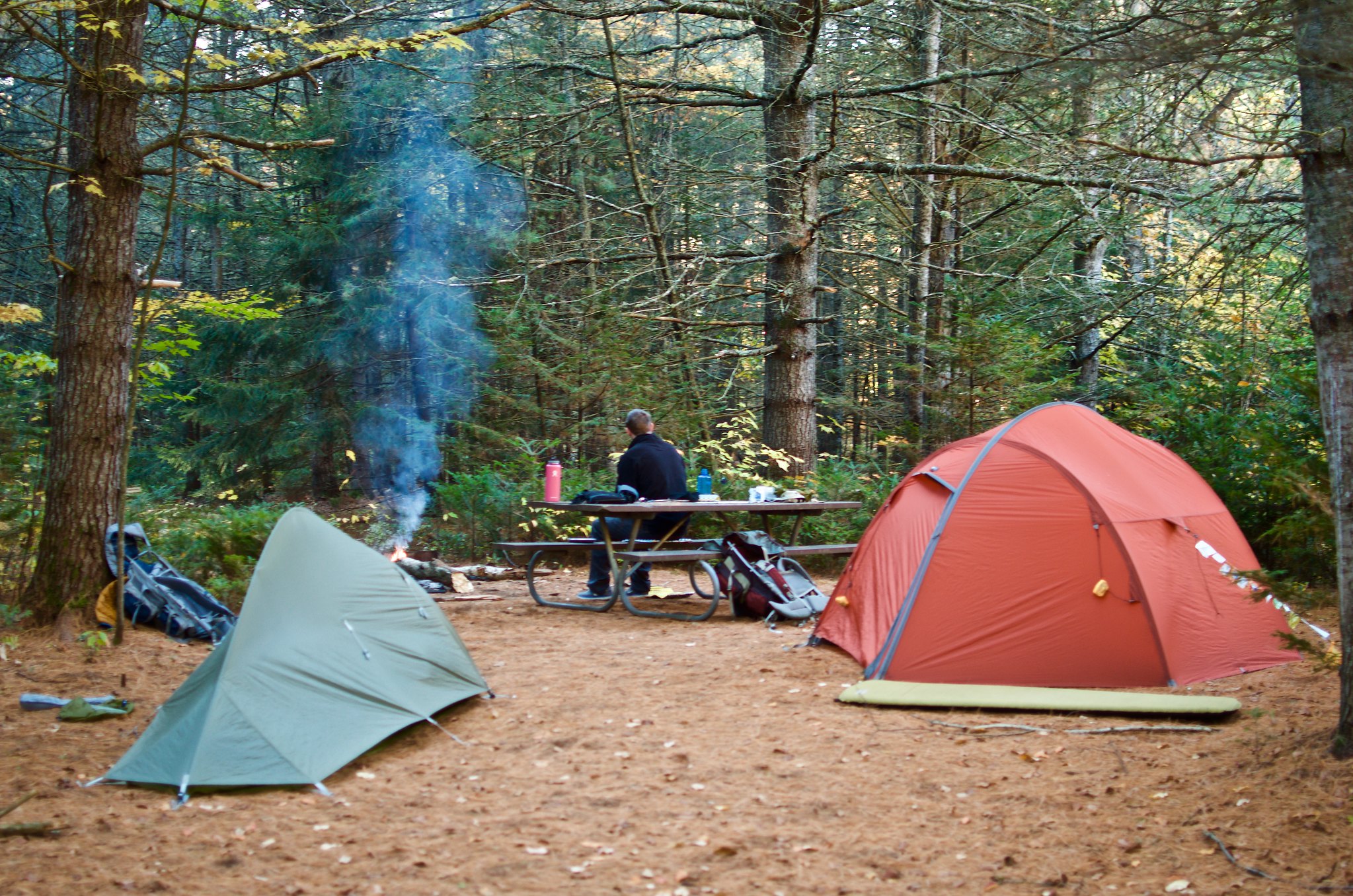

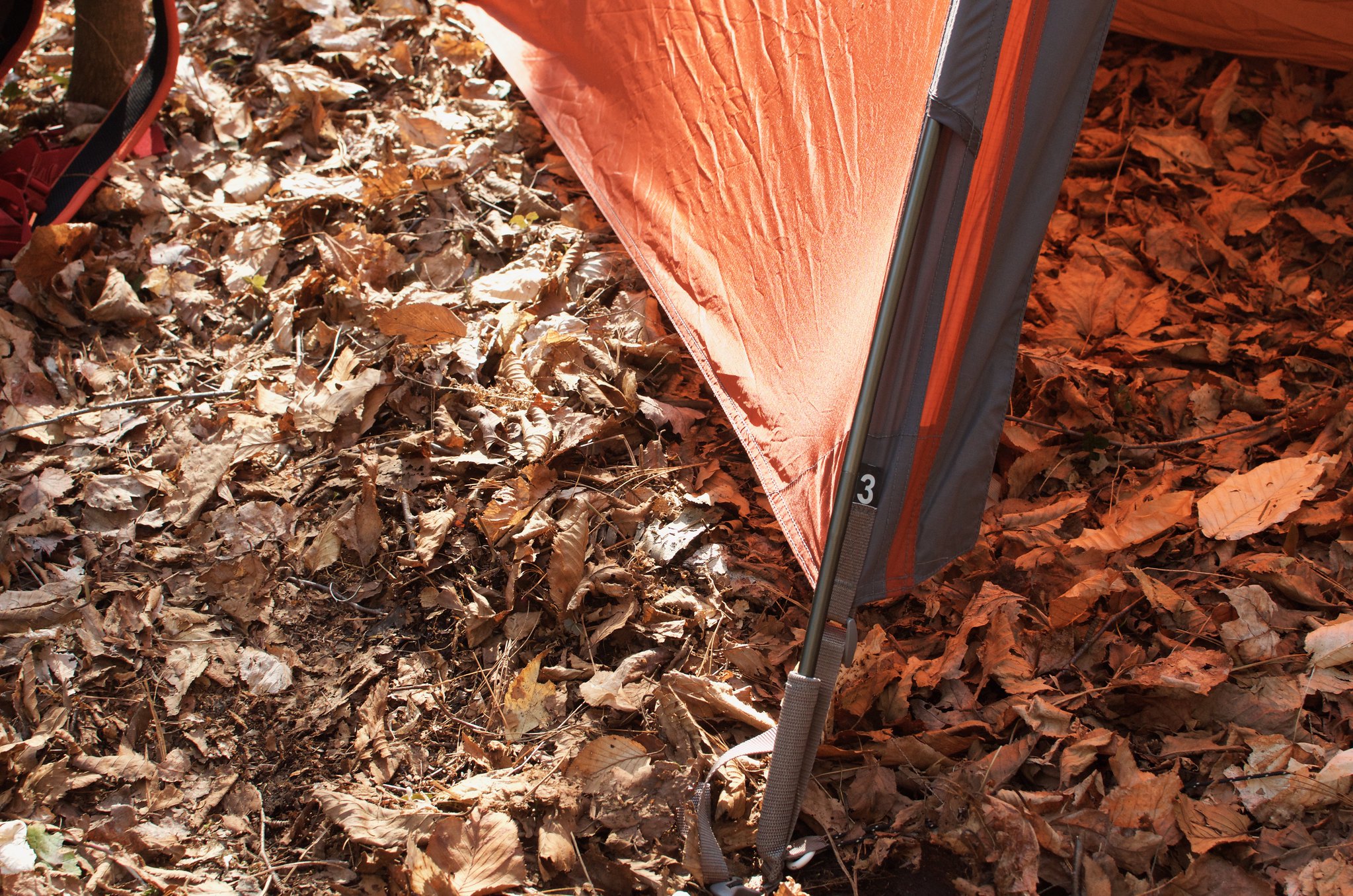

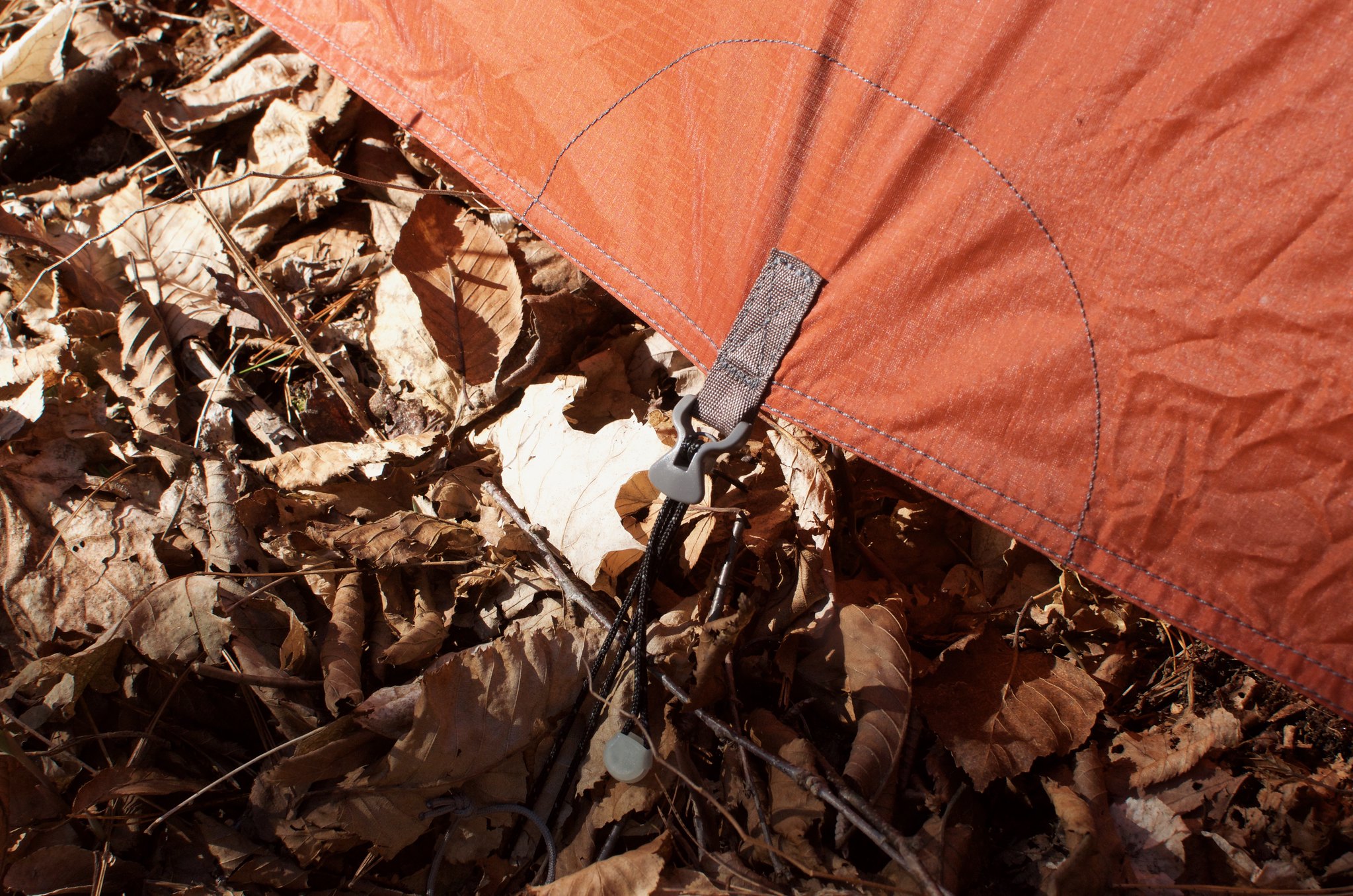


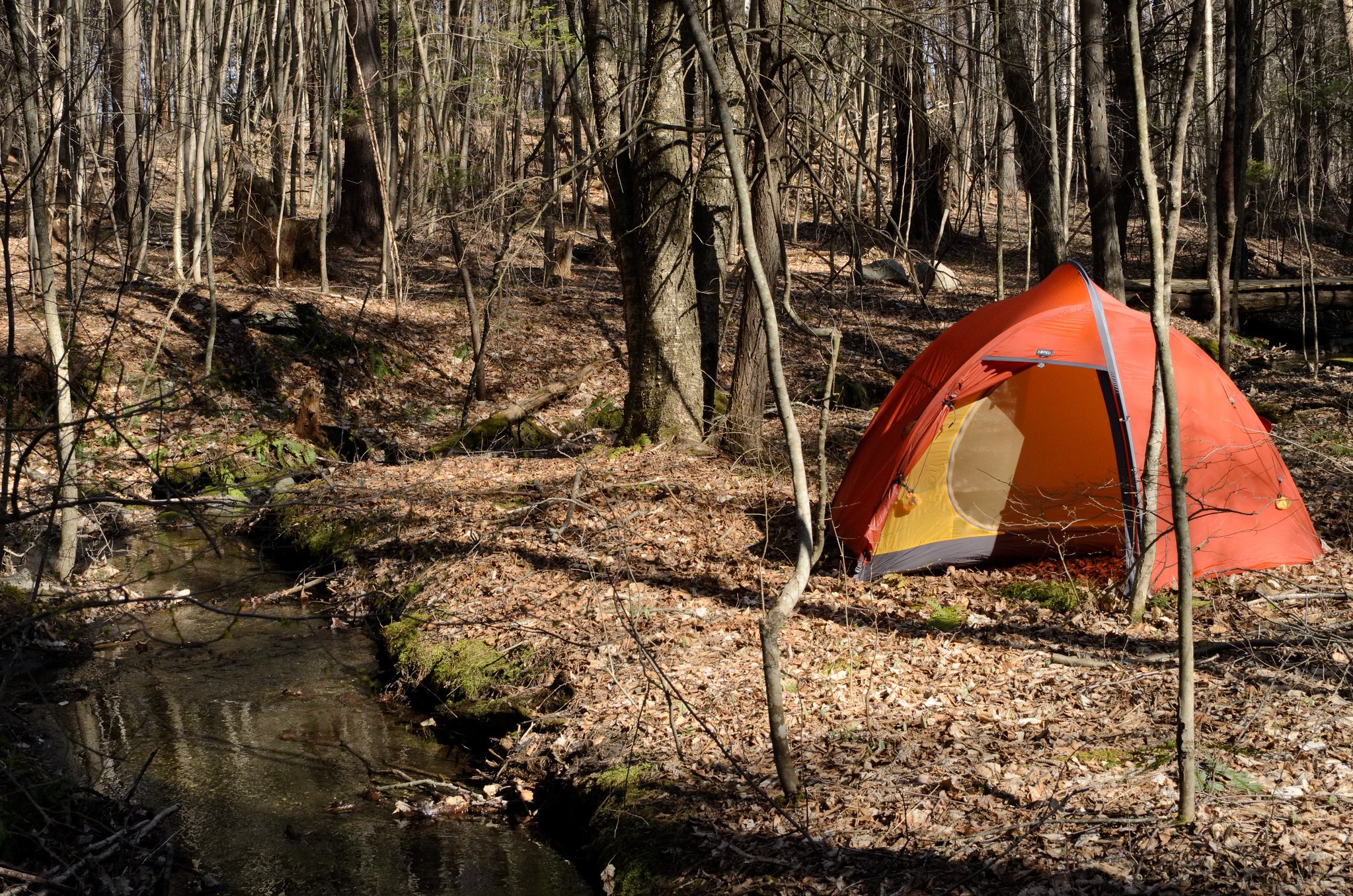
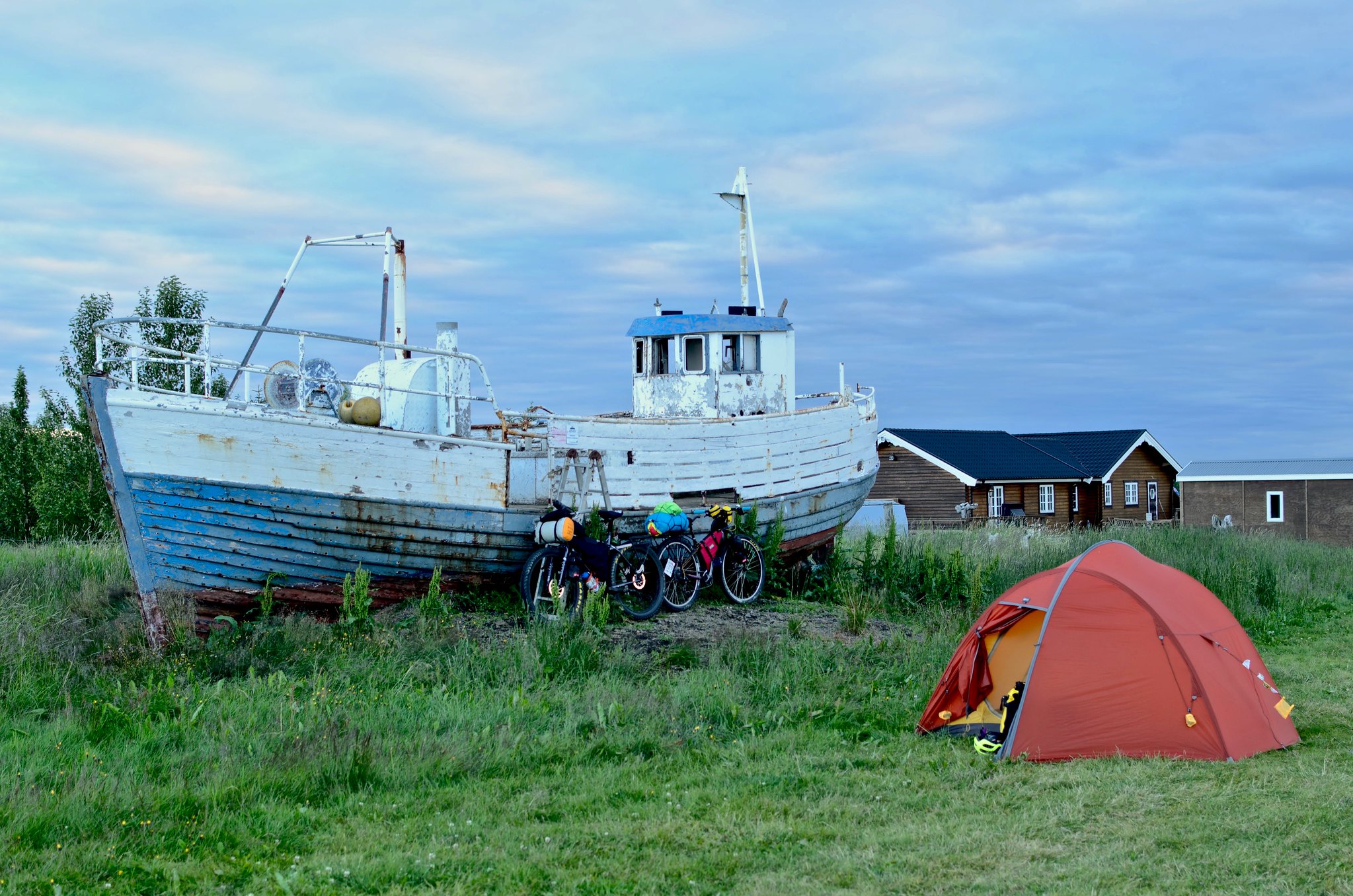


I will never have the need for this tent ⛺️..
But I actually find your reviews so interesting and fun that I actually read it all the way through..
Very durable and reliable tent ⛺️ indeed..
So glad 😁 you and Kelly were super comfortable and was able to enjoy 😊 your camping in Iceland 🇮🇸 and all the other places you mentioned..
Thanks Nita! We saved about $2,000 on accommodations by using a tent in Iceland. Even if you don’t plan to head out into the wilderness, a comfy tent like this one can pay for itself in some places.
True..
I will definitely make a note of it’s name.. so just in case I needed a good 😊 tent ⛺️
nice review! makes me want to get a tent like this
Why are your bike’s tires so big? Is it because of the weight you are carrying?
Nope! The big tires provide lots of traction on loose ground, like gravel. The large wheel diameter also makes it easier to roll over obstacles like roots, logs, rocks, etc.
I am actually only carrying about 20lbs as pictured. Most of those bags are filled with soft, lightweight stuff like the tent and sleeping bag.
Nice. Looks like Exped is very comfortable and reliable to use. Such a wonderful feeling to have a comfy tent like this.
In your extensive research and/or personal experience, did you look at, or see anyone else use, Tarptent products? They have a couple models in their lineup that are supposed to be rated for 4 seasons, and that use trekking poles for pitching to save weight. How would they have held up in Icelandic weather?
Thanks.
I like Tarptent a lot! I don’t have any personal experience, but I know someone who used one all through South America, so I wouldn’t hesitate to bring one on a longer trip.
I would probably bring it to Iceland, but maybe not… the security of 4-season fabrics and poles is good peace of mind. A Hilleberg Akto would be a good 1P shelter for Iceland.
Interesting review. I lived in Iceland for 15+ years and camped regularly for weeks at a time in either a Coleman cabin tent or my cheap Coleman sundome. Wind is the biggest issue in Iceland, but both tents managed the weather and terrain just fine. Tents have come a long way since then, but I think I’ll just stick to my old reliable gear.
Nothing wrong with that! 🙂